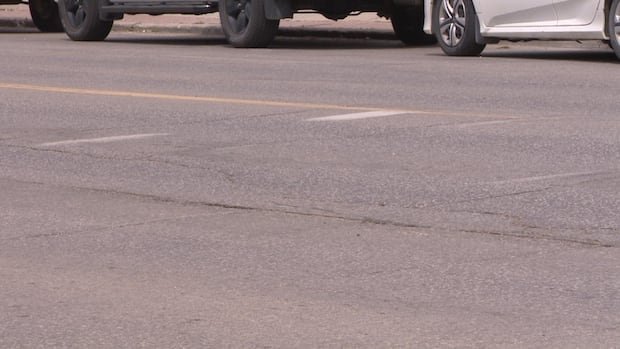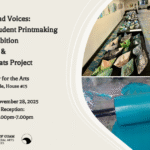
Winnipeg’s lone street-line painting machine broke down three times within the last two weeks.
Drivers may have noticed faded or missing lines on many Winnipeg streets.
But despite the breakdowns, the city says its crew is on track to give all streets a coat of paint this year.
At a meeting of city council’s public works committee on Thursday, public works director Jim Berezowsky said the machine is 19 years old and nearing the end of its life.
“Fortunately enough, the breakdowns were quick and efficient to get up and running,” he said.
The City of Winnipeg approved funding in last year’s budget to purchase a new line-painting machine, but public works committee chair Coun. Janice Lukes said it could be a long time before it arrives.
“Paint is not the answer for everything safety-related, but it is one of the tools in the toolkit to ensure safety at intersections on high-speed, major corridors around schools, pedestrian crosswalks and the like,” Lukes said in an interview Friday.
The city typically paints lines on roads once per year and applies a second coat to about a quarter of them, depending on weather and road conditions, according to a report presented to the committee on Thursday.
Crews have completed approximately 25 per cent of line painting and about 30 per cent of intersection painting so far this year, city spokesperson Julie Dooley wrote in an email statement.
“This is on-par with where we’d want to be at this point of the season,” she wrote.
A new machine could cost as much as $1 million, and is expected to arrive in 2026.
The city is also considering whether to buy the same type of machine, which only uses paint, or one that can use a longer-lasting epoxy-based lane marking material.
The city issued a request for tender for a contractor to help apply a second coat of paint on all streets — at a cost of up to between $1.4 million and $1.9 million.
Dil Subedi, owner of Windsor DC Driving School, says the current state of the city’s streets makes it difficult to teach student drivers.
“It’s very stressful,” Subedi said.
“They cannot just keep the car in the lane if the lines are not clear. So they keep drifting over … it’s very challenging for both of them, both the learner and the instructors.”
Painting street lines typically costs between $800 and $1,100 per kilometre, according to the report. That is higher than rural highway painting, due to urban issues such as traffic volume and signal delays.
Dooley says the crew is working on a compressed schedule to maximize the time spent painting.
“Depending on weather conditions, covering more than 25 per cent of streets with more than one application of paint may be possible,” Dooley wrote.
In 2021, the city was able to complete a second application of paint to lane markings across the entire city.











